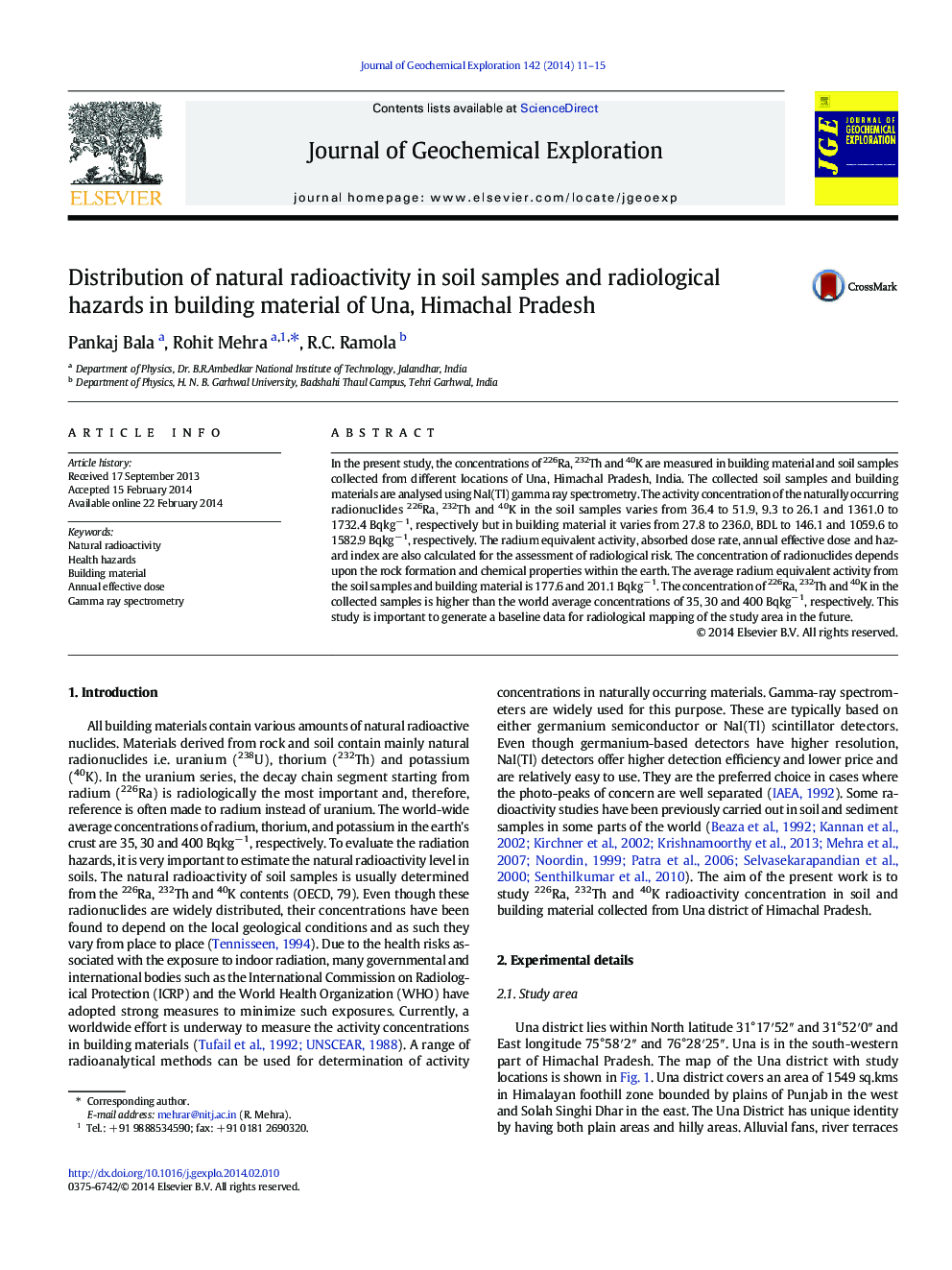| Article ID | Journal | Published Year | Pages | File Type |
|---|---|---|---|---|
| 4457396 | Journal of Geochemical Exploration | 2014 | 5 Pages |
•Natural radioactivity has been measured using Gamma Ray Spectroscopy.•The concentration for 226Ra is very much comparable than world figures.•Specific activity of 40K in all the samples is higher than the world values.•The value of hazard index is lower than unity (except for granite).
In the present study, the concentrations of 226Ra, 232Th and 40K are measured in building material and soil samples collected from different locations of Una, Himachal Pradesh, India. The collected soil samples and building materials are analysed using NaI(Tl) gamma ray spectrometry. The activity concentration of the naturally occurring radionuclides 226Ra, 232Th and 40K in the soil samples varies from 36.4 to 51.9, 9.3 to 26.1 and 1361.0 to 1732.4 Bqkg− 1, respectively but in building material it varies from 27.8 to 236.0, BDL to 146.1 and 1059.6 to 1582.9 Bqkg− 1, respectively. The radium equivalent activity, absorbed dose rate, annual effective dose and hazard index are also calculated for the assessment of radiological risk. The concentration of radionuclides depends upon the rock formation and chemical properties within the earth. The average radium equivalent activity from the soil samples and building material is 177.6 and 201.1 Bqkg− 1. The concentration of 226Ra, 232Th and 40K in the collected samples is higher than the world average concentrations of 35, 30 and 400 Bqkg− 1, respectively. This study is important to generate a baseline data for radiological mapping of the study area in the future.
